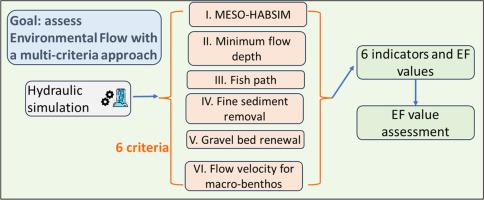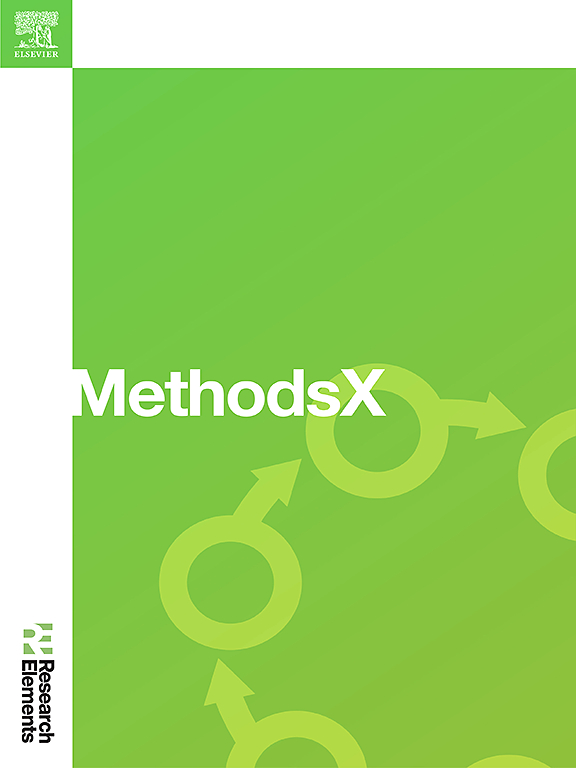A multi-criteria analysis for Environmental Flow Assessment based on hydraulic modelling
Abstract
Environmental Flow Assessment is crucial, when assessing the impact of water withdrawal on riverine habitat. Still, standard methods to tackle such exercise are not available hitherto, while several techniques were developed generally to be tailored ad hoc for the considered case study. Here, we propose a multi-criteria approach, usable to quantify Environmental Flow, and uncertainty thereby, basing upon a hydraulic model of the river, and habitat viability for a given target fish species. Six criteria are considered that gather 3 classes of constraints for fish development.
- •
Geometric, and biological constraints Fish show to cherish specific areas of the river, changing with discharge level (criterion I), they need a least water level to move comfortably (criterion II), with some degree of interconnection along the whole river bed (criterion III).
- •
Riverbed quality Fine sediments (criterion IV) and gravel (criterion V) would be washed away to avoid clogging of spawning areas, and to clean and reset the gap system.
- •
Macro-benthos requirement (criterion VI) Benthic invertebrates, i.e. preys of target fish, need a minimum flow velocity to form a community. Finally, a table is generated to compare optimal values of each criterion, supporting the choice of a “globally viable” EF value.


 求助内容:
求助内容: 应助结果提醒方式:
应助结果提醒方式:


